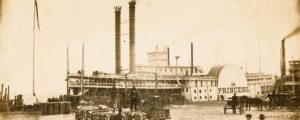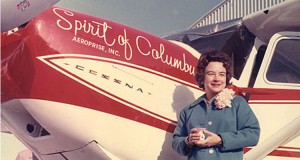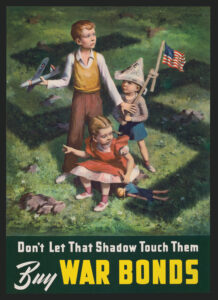In a quiet neighborhood of Arlington, Virginia, Ed Bearss takes walks near his house on a near-daily basis, often wearing a hat and offering a nod to passers-by. I know this because I’ve lived around the corner from him for seven years.
Whenever I see him, I resist the urge to beg him to tell me Civil War stories in that stentorian roar for which he is known. The 84-year-old Bearss has a right to privacy, I believe, even though he is a World War II hero, a much-published historian and a sought-after lecturer and battlefield tour leader. He is also, of course, the National Park Service’s chief historian emeritus.
As a contributing writer to America’s Civil War, however, I was given the plum assignment to interview Bearss. Why not be neighborly about it? I invited him over one sunny afternoon.
Throughout our meeting, he looked comfortable in my living room, nibbling on cookies and leaning back on the couch, just like good neighbors do:
You have an amazing memory for Civil War stories and facts. To what do you attribute that?
One thing is genes. I have a good memory, and I’ve trained it to be better. I may have an almost photographic memory for maps and landscapes. If I visit them once, I never forget them.
What is your earliest memory related to the war?
I was interested in history from the time I was in the second grade. At that time I was interested in Lewis and Clark and the Nez Perce, because I grew up in Montana. I became interested in the Civil War in the seventh grade. My father liked to read to my brother and me books that he was interested in. He did not read children’s books. Someone had given him a book by John Thomason on Jeb Stuart. My father read this book to me, and that captured me—I’ve been interested in the Civil War since then.
Do you have a favorite Civil War place or personality?
It changes. Jeb Stuart was my favorite Civil War soldier until I joined the Marines. Since I was a ground-pounder, a “mud Marine,” I would relate much more to a Civil War infantryman than to a cavalryman. I have two favorite battlefields—Perryville and Antietam—because of their significance to the war, and because of their handsome rural environment. My favorite battlefield and my favorite battlefield to give a tour on don’t have to be the same. Gettysburg—to the American people, to the literature of the Civil War and to Congress—is the most important battle of the Civil War. You can argue about that, but that’s not what makes a tour interesting. What makes a tour interesting is the degree of knowledge of the people participating in the tour. Since much more has been written on Gettysburg, the average group is going to have a much deeper interest in both the battle and the personalities involved than any other battle of the Civil War. So you get a much better interaction with the group, which is mandatory if you have to give five or six tours of the same area within a month!
What advice do you have for parents and teachers to get young people excited about the Civil War?
Having a good memory, I can talk from my heart. Giving a tour, you’ve shot yourself in the foot if you read more than short excerpts. You have to appeal to their emotions and relate what is happening to where they’re standing. You have to make them feel that they’re walking in the footsteps of history. If you don’t do that, you’re going to lose them.
What do you think about the current state of battlefield preservation?
As Al Smith would say when he ran for president, “Let’s look at the record.” And that’s what I’d say about the Civil War Preservation Trust—let’s look at the record. They have scored tremendous successes since 2000 at places such as Slaughter Pen Farm [at Fredericksburg]. They know what they’re up against. Particularly in the Philadelphia-Petersburg corridor, the Chattanooga-Atlanta corridor, around Nashville, and certain other areas, they’re racing the clock. It’s a race between the resources they have, which they’ve been able to multiply many times over, and the demand for land.
Your wife, Margie Riddle Bearss, passed away last fall. How would you like her to be remembered?
I met my wife because she was interested in Sherman’s Meridian expedition. She was an English teacher. She wrote me a letter [when Bearss worked at Vicksburg National Military Park] and asked if we had any materials on the Meridian expedition in the park files, and I said yes. We used to joke about it—it was my day off when she came over. People always talked about how fast I got dressed and came in on my day off….Instead of bringing her flowers on our second date, I brought her a cannonball. It was a semi-lightning courtship of seven months. She taught until she had children, but she continued to be interested in history and wrote several books on her own about the Civil War, and was a particularly important player in the salvage and the inventory of the USS Cairo artifacts, the gunboat that I and two other fellows found in 1956….They recently put a monument to her on the Champion Hill battlefield. My name isn’t even on it.
What drives you to keep doing the tours, the lectures, the writing?
Besides a good memory, I have very high energy. I can probably out-walk anyone but the people under 30 on my tours. I don’t need a great amount of sleep. My adrenaline pumps most of the time.
Originally published in the September 2007 issue of America’s Civil War. To subscribe, click here.




